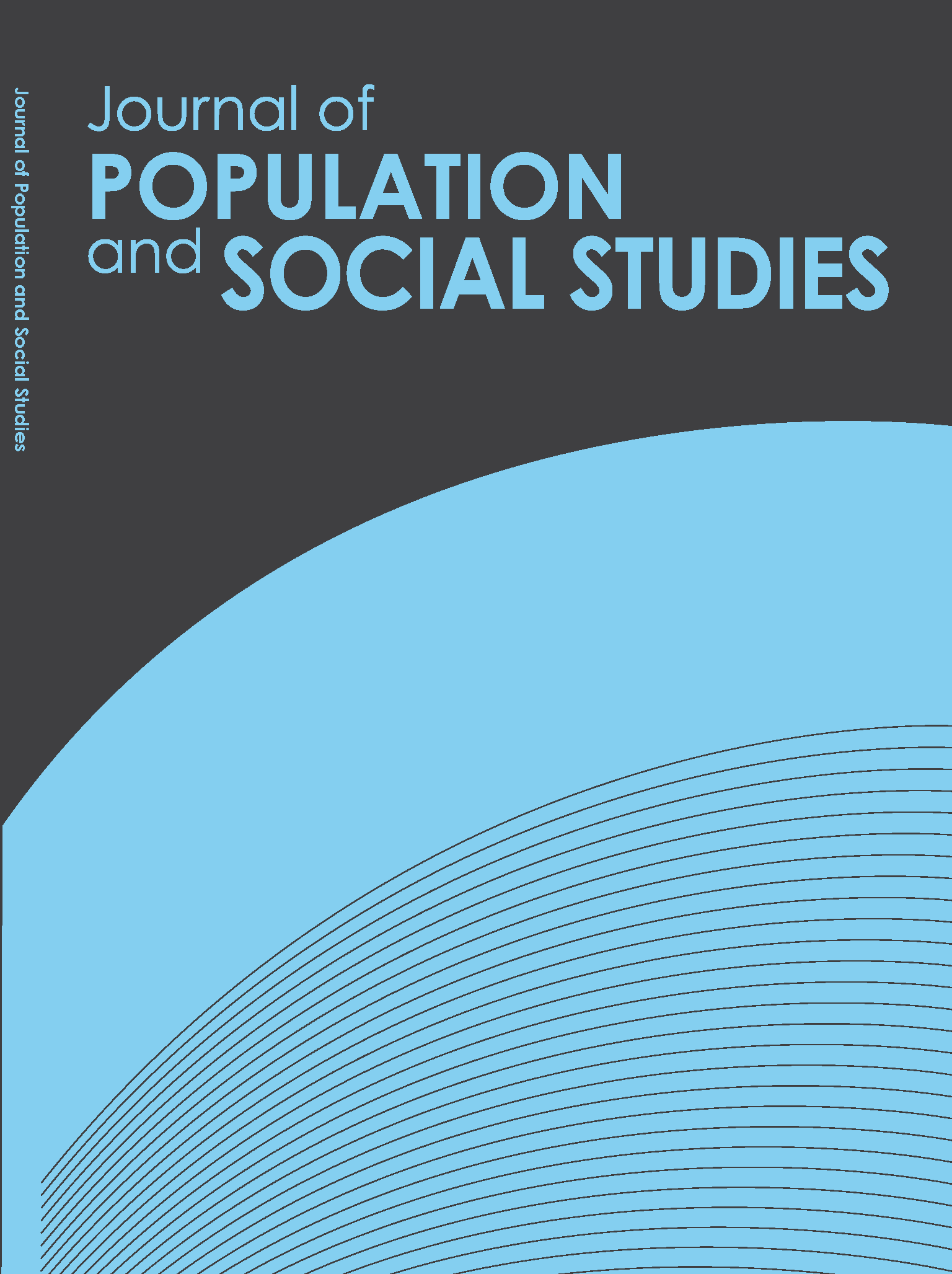Regional Variation in Preventive Health Practices of Rural Adults of Bangladesh Regarding COVID-19 Prevention During the Pandemic Crisis
Main Article Content
Abstract
Coronavirus disease 2019 (COVID-19) became a global pandemic within a few months. Even though Bangladesh has been badly affected by COVID-19, the pandemic is still a concern across the country. This study was conducted to explore regional variations in preventive health practices of rural adults during the COVID-19 pandemic, and to determine the predictors regarding COVID-19 prevention. A cross-sectional survey was conducted in rural Bangladesh in 2020 among 810 respondents selected by multi-stage random sampling. Data collection was done by face-to-face interviews using a questionnaire. The results showed that almost half of the rural adults (48.1%) had poor health practices regarding COVID-19 prevention. Rural adults of the Mymensingh district showed relatively better health practices during the pandemic (U = 58,747.5, p < 0.001). Not only the background issues but also information, attitude, motivation, and intention in COVID-19 prevention were significant in predicting the health practices of rural adults in COVID-19 prevention. The significant regional effect was determined in COVID-19 prevention behavior of rural adults (p < 0.001) in hierarchical regression, explained through a modified reasoned action approach. Health programs should be strengthened more, not only to improve preventive health practices of rural adults but also to establish regional equity in COVID-19 prevention, ensuring region-specific initiatives on behavioral changes.
Article Details

This work is licensed under a Creative Commons Attribution-NonCommercial-NoDerivatives 4.0 International License.
References
• Anwar, S., Nasrullah, M., & Hosen, M. J. (2020). COVID-19 and Bangladesh: Challenges and how to address them. Frontiers in Public Health, 8, Article 154. https://doi.org/10.3389/fpubh.2020.00154
• Baniamin, H. M., Rahman, M., & Hasan, M. T. (2020). The COVID-19 pandemic: Why are some countries coping more successfully than others? Asia Pacific Journal of Public Administration, 42(3), 153–169. https://doi.org/10.1080/23276665.2020.1784769
• Baqui, P., Bica, I., Marra, V., Ercole, A., & van der Schaar, M. (2020). Ethnic and regional variations in hospital mortality from COVID-19 in Brazil: A cross-sectional observational study. The Lancet, 8(8), e1018–e1026. https://doi.org/10.1016/s2214-109x(20)30285-0
• Ferdous, M. Z., Islam, M. S., Sikder, M. T., Mosaddek, A., Zegarra-Valdivia, J. A., & Gozal, D. (2020). Knowledge, attitude, and practice regarding COVID-19 outbreak in Bangladesh: An online-based cross-sectional study. PloS ONE, 15(10), Article e0239254. https://doi.org/10.1371/journal.pone.0239254
• Financial Express. (2020, July 28). Mask-wearing mandatory in BD: Not everyone cares. https://thefinancialexpress.com.bd/health/mask-wearing-mandatory-in-bd-not-everyone-cares-1595928041
• Fishbein, M. (2008). A reasoned action approach to health promotion. Medical Decision Making, 28(6), 834–844. https://doi.org/10.1177/0272989X08326092
• Hayat, K., Rosenthal, M., Xu, S., Arshed, M., Li, P., Zhai, P., Desalegn, G. K., & Fang, Y. (2020). View of Pakistani residents toward coronavirus disease (COVID-19) during a rapid outbreak: A rapid online survey. International Journal of Environmental Research and Public Health, 17(10), Article 3347. https://doi.org/10.3390/ijerph17103347
• Kartheek, A. S. V., Gara, K. H., & Vanamali, D. R. (2020). Knowledge, attitude and practices towards COVID-19 among Indian residents during the pandemic: A cross-sectional online survey. Journal of Dr. NTR University of Health Sciences, 9(2), 107–115. https://doi.org/10.4103/JDRNTRUHS.JDRNTRUHS_75_20
• Kumar, V., Ramkumar, Pruthvishree, B. S., Pande, T., Sinha, D. K., Singh, B. R., Dhama, K., & Malik, Y. S. (2020). SARS-CoV-2 (COVID-19): Zoonotic origin and susceptibility of domestic and wild animals. Journal of Pure and Applied Microbiology, 14(1), 741–747. https://doi.org/10.22207/JPAM.14.SPL1.11
• National Institute of Population Research and Training (NIPORT), & ICF. (2019). Bangladesh Demographic and Health Survey 2017-18: Key Indicators.
• https://dhsprogram.com/pubs/pdf/PR104/PR104.pdf
• Phoglad, S. (2021). Understanding accessibility to medical and healthcare services for informal workers in Bangkok during the COVID-19 outbreak. Journal of Population and Social Studies, 30, 18–35. http://doi.org/10.25133/JPSSv302022.002
• Rothe, C., Schunk, M., Sothmann, P., Bretzel, G., Froeschl, G., Wallrauch, C., Zimmer, T., Thiel, V., Janke, C., Guggemos, W., Seilmaier, M., Drosten, C., Vollmar, P., Zwirglmaier, K., Zange, S., Wölfel, R., & Hoelscher, M. (2020). Transmission of 2019-nCoV infection from an asymptomatic contact in Germany. The New England Journal of Medicine, 382(10), 970–971. https://doi.org/10.1056/NEJMc2001468
• Social Watch. (2012, March 14). Bangladesh: Centralisation in Dhaka blamed for unsustainable development. https://www.socialwatch.org/node/14573
• Tithila, K. K. (2020, July 28). Covid-19: Dhaka division worst at wearing face masks. Dhaka Tribune. https://archive.dhakatribune.com/health/coronavirus/2020/07/28/dhaka-division-worst-in-bangladesh-for-wearing-masks
• Wilder, B., Charpignon, M., Killian, J. A., Ou, H. C., Mate, A., Jabbari, S., Perrault, A., Desai, A. N., Tambe, M., & Majumder, M. S. (2020). Modeling between-population variation in COVID-19 dynamics in Hubei, Lombardy, and New York City. Proceedings of the National Academy of Sciences, 117(41), 25904–25910. https://doi.org/10.1073/pnas.2010651117
• World Health Organization. (2020a, March 24). COVID-19 Situation Report No. #4. https://www.who.int/docs/default-source/searo/bangladesh/covid-19-who-bangladesh-situation-reports/who-ban-covid-19-sitrep-04.pdf?sfvrsn=69b6d931_8
• World Health Organization. (2020b, November 2). COVID-19 Bangladesh Morbidity and Mortality Weekly Update (MMWU) No. 36. https://www.who.int/docs/default-source/searo/bangladesh/covid-19-who-bangladesh-situation-reports/who-covid-19-update-36-20201102.pdf?sfvrsn=e3f0fc8a_2
• Zhong, B. L., Luo, W., Li, H. M., Zhang, Q. Q., Liu, X. G., Li, W. T., & Li, Y. (2020). Knowledge, attitudes, and practices towards COVID-19 among Chinese residents during the rapid rise period of the COVID-19 outbreak: a quick online cross-sectional survey. International Journal of Biological Sciences, 16(10), 1745–1752. https://doi.org/10.7150/ijbs.45221


